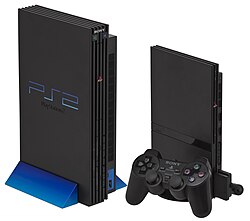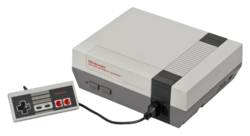Best-selling consoles



- Background shading and # indicates consoles currently on the market.
>Final sales are greater than the reported figure. See notes.
The following table contains video game consoles that have sold at least 1 million units worldwide either through to consumers or inside retail channels. Each console includes sales from every iteration unless otherwise noted. The years correspond to when the first version of each console was released (excluding test markets).



>Final sales are greater than the reported figure. See notes.
Finally, our gaming business is thriving with the Xbox One hitting 10 million units sold. I am thrilled to welcome Mojang and Minecraft community to Microsoft.
Comercializado no Brasil desde setembro de 1989, o saudoso Master System já vendeu mais de 8 milhões de unidades no país, segundo a Tectoy.
On July 12, toy giant Bandai unleashed a third iteration (in stylish red and blue models) of their handheld WonderSwan system, the new-and- improved SwanCrystal, in Japan.
A new colored version of Bandai Co.'s <7967> WonderSwan handheld game machine will hit Japanese stores in early December, the Japanese game maker said Wednesday. [...] The original WonderSwan, with its black-and-white displays, has sold 1.55 million units since its debut in March 1999.
The move reflects declining sales of Bandai's WonderSwan mobile game machine. The major Japanese toy maker is looking to supply two or three software titles for the rival company's popular game machine by March next year. Bandai will shift its focus from sales of hardware to software for "multiple platforms," including personal digital assistants, Takasu told a press conference.
Base instalada: 5 milhões de Master System; 3 milhões de Mega Drive
We had 700,000 active users and we had 3 million N-Gage devices out there.
'First quarter sales of ColecoVision were substantial, although much less that[ sic ] those for the year ago quarter,' Greenberg said in a prepared statement. He said the company has sold 2 million ColecoVision games since its introduction in 1982.
Coleco is now debating whether to withdraw from electronics altogether. Colecovision still sells, but it is a shadow of its former self.
Thursday, Coleco said the entire inventory of its troubled Adam personal computer has been sold, along with much of its Colecovision inventory. The company's chairman, Arnold Greenberg, said Coleco expects no more charges against earnings from the two discontinued products.
The 7800 system with its enhanced graphics capabilities was introduced in 1986 and has sold more than million units to date.
Meanwhile, Nintendo, the first on the market with its black-and-white Game Boy, has sold approximately 7.5 million portable systems, analysts estimate. Sega has sold about 1.6 million units of its color Game Gear system, while Atari Inc. has sold about one million units of its $99 Lynx color portable system.
The Jaguar looked to be a winner, with popular new games and hot sales. Around June of 1994 the company decided to stop supporting the Lynx and concentrate on the Jaguar.
According to Philips, there are 1 million CD-i owners worldwide.
When the game [Telstar] crashed hard, earnings fell 50 percent in 1977 and the company lost $22 million in 1978, barely skirting bankruptcy after Handel -- then chief financial officer -- found new credit and mollified angry creditors after months of tough negotiation.
The company has stopped producing its 5200 SuperSystem games player, more than 1 million of which were sold.
1 WonderSwan Famitsu sources
2 Release year sources
After successful test marketing in 1979, Mattel Electronics released its Intellivision system nationwide in late 1980.
So, in 1976, Coleco introduced Telstar, a Pong clone, for $50, about half Atari's price.
Bibliography